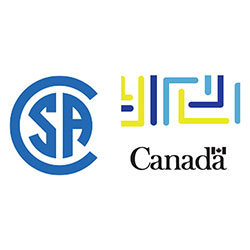









In February 2023, Accessibility Standards Canada (ASC) and CSA Group announced a new collaboration to publish three updated accessibility standards that will help create more inclusive and barrier-free spaces across Canada.
As Canada's premier supplier of tactile solutions for the visually impaired, Tactile Solution Canada recognizes the immense value these new standards will have in advancing accessibility and safety in the built environment.
In this blog post, our team of experts will provide an overview of these landmark standards, highlight key improvements and takeaways, and discuss the importance of regulatory compliance for Canadian contractors, architects, and property managers.
First, let's provide some background on Accessibility Standards Canada. ASC is an accredited standards development organization created in 2019 under the Accessible Canada Act.
The mandate of ASC is to develop voluntary accessibility standards, fund research, and share information to help achieve a barrier-free Canada by 2040. ASC brings together a wide range of stakeholders, including persons with disabilities, industry representatives, regulators, and subject matter experts, to create consensus-based accessibility standards.
These standards aim to remove barriers and enhance accessibility in priority areas like employment, built environment, transportation, information & communication technologies, and service delivery. They outline technical requirements and best practices that organizations, including federal entities, can voluntarily adopt to improve accessibility.
While not legally mandatory, ASC's standards are considered the gold standard for accessibility and are increasingly being referenced in provincial and local regulations across Canada.
Now, let's take a closer look at the three critical accessibility standards recently published through the collaboration between ASC and CSA Group:
This revised standard provides best practice requirements for making buildings and facilities accessible for persons with varying disabilities. Key updates in this edition include:
This standard sets recommendations for creating accessible automated banking machines, self-checkout kiosks, self-order menus, and other public-facing interactive systems. The main focus areas are:
This new residential accessibility standard establishes best practices for designing adaptable and accessible homes. Key provisions include:
These standards were developed through extensive consultations with subject matter experts, alongside invaluable lived experience input from persons with disabilities.
The publication of these new standards represents a major milestone in ensuring accessibility for all Canadians. Here are some of the key reasons they are so important:
While voluntary, compliance with standards like ASC/CSA B651 is becoming a crucial part of risk management for constructors and property managers in Canada.
Here are some reasons why adhering to accessibility standards is vital:
By proactively ensuring projects meet or exceed ASC's accessibility standards, constructors and property managers demonstrate leadership, responsibility, and expertise in inclusive design. This open approach to accommodating Canadians of all abilities represents the future of ethical and sustainable construction.
As Canada's leading tactile solutions provider, Tactile Solution Canada helps constructors, architects, building owners, and property managers enhance accessibility and regulatory compliance with our diverse product range, including:
Designed for strength, slip resistance, and CSA/AODA/ISO standards compliance, our solutions create accessible built environments that accommodate Canadians of all abilities.
By consulting our team of experts early in your project, we can recommend optimal tactile solutions tailored to your unique specifications and compliance needs. Contact us today!
The new standards provide consistent, nationwide criteria for accessibility across priority sectors. They reflect the latest evidence and universal design best practices. They also demonstrate an organization's commitment to inclusivity.
The standards were developed through extensive consultation between Accessibility Standards Canada, CSA Group subject matter experts, and persons with lived experience of disabilities.
What risks do contractors and owners face by ignoring accessibility standards?
Potential risks include:
Our tactile tiles, pavers, and wayfinding solutions provide critical visual, tactile, and orientation cues for persons with visual disabilities as per CSA and AODA regulations.
By consulting accessibility experts like Tactile Solution Canada early in the design process, constructors can seamlessly integrate compliant tactile solutions into public space projects.
